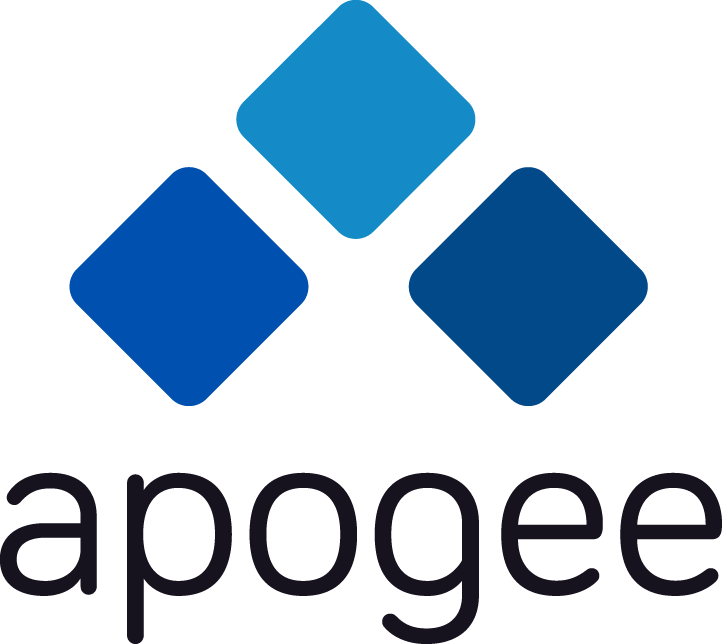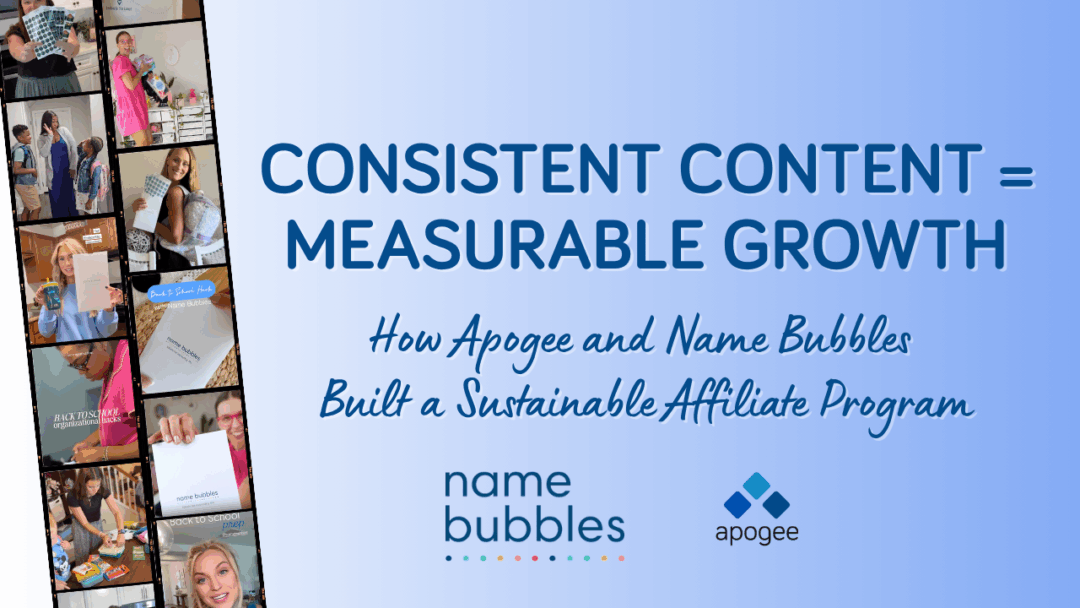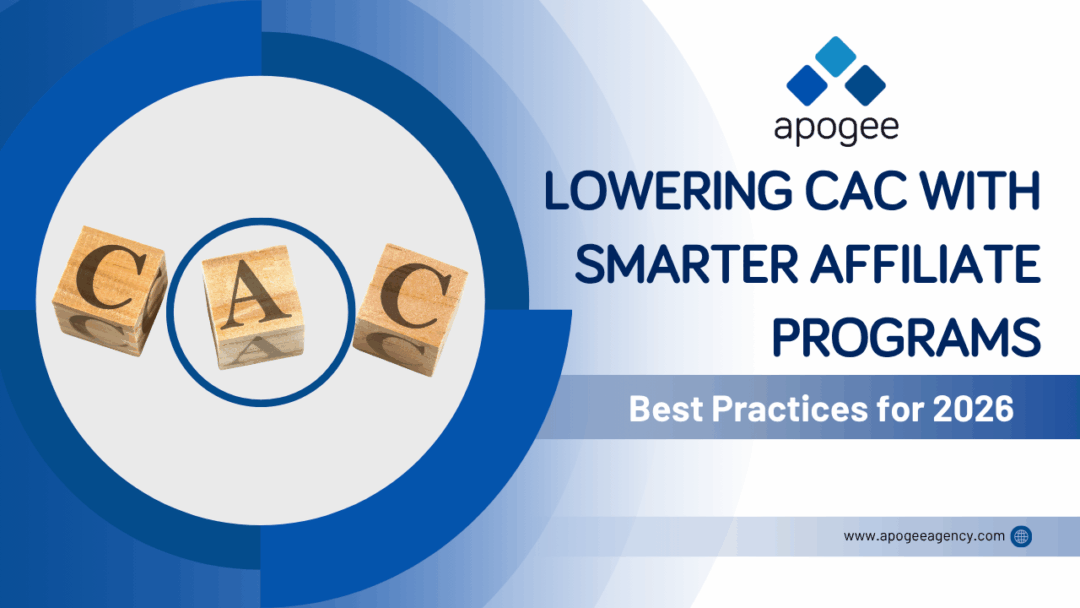
How Bloggers and Influencers Can Simplify Affiliate Marketing with Mavely
April 8, 2025
Why Nano Influencers Are the Secret Weapon of Your Affiliate Program
June 25, 2025Affiliate marketing is one of the smartest ways for new DTC brands to grow, especially when you’re launching with limited ad budgets and looking for cost-effective ways to increase visibility and drive sales. But if you’re expecting to flip a switch and watch affiliate revenue pour in overnight, you’re going to be sorely disappointed.
The truth is, affiliate marketing is a long game. The first six months of your affiliate program won’t look like exponential growth. They’ll look like foundation-building. And that’s exactly how it should be.
Whether you’re managing your program in-house or working with an affiliate agency like Apogee, this article will walk you through what those early months actually involve, what success looks like (spoiler alert: it’s not always sales at first), and how to avoid the common pitfalls that slow new brands down.
Month 1: Getting Set Up and Launched
Your first month is all about getting the technology right. You’ll choose an affiliate platform (like ShareASale/Awin, Impact, or Refersion), build your program terms, set up tracking links, create branded assets, and write out your elevator pitch for potential partners. It’s a lot of work, and most of it happens quietly behind the scenes. If anything gets misconfigured during this step—whether it’s broken tracking or unclear terms—you’ll run into trouble later.
At this point, you shouldn’t expect any sales. That’s not the goal yet. The goal is to make sure that when traffic does come, everything works. This is also when strategy starts to take shape. If you’re partnering with an experienced affiliate agency, this is when they’re crafting the roadmap: who to recruit, how to structure commissions, what content you’ll need, and how to position your program competitively in your category.
Months 2–3: Recruiting and Relationship Building
Once the program is live, it’s time to start inviting affiliates to join, which means shifting into relationship-building mode. You’ll begin reaching out to bloggers, creators, influencers, and site owners who align with your brand. Some will be ready to promote you right away, but many will want to learn more about your product, request samples, or plan content around a future launch window.
This is where patience comes in. These first few months are about introducing your brand to the affiliate world of publishers and getting on the radar of the right people. If you’re a new name with no existing buzz or track record, you’ll need to give partners a reason to take a chance on you. That could mean gifting products, offering compensation in exchange for content, or simply staying consistent with outreach and communication.
This process is easier and faster when you have someone in your corner who already knows the affiliate landscape and has established relationships with affiliates and publishers of all sizes. A well-connected affiliate agency can open doors, make warm introductions, and create a recruiting strategy that goes beyond cold emails and mass blasts.
Months 4–5: The Content Starts Rolling In
By now, the seeds you’ve planted with affiliates are starting to grow. Creators who were gifted product or onboarded early begin to post content such as blog reviews, Instagram reels, TikToks, newsletters, etc. Some of that content may lead to your first affiliate sales, but just as importantly, you now have real social proof you can leverage across your other marketing channels.
This is when your affiliate program starts to feel alive. You have links going out into the world. You can track clicks and see what’s driving traffic. You’ll start noticing which affiliates are enthusiastic and engaged, and which ones signed up but ghosted (don’t take it personally—it happens in every program).
It’s also the ideal time to make some strategic adjustments. Are certain creatives getting more clicks than others? Is your commission rate competitive enough? Are there patterns in what’s converting? With a few months of data, you can now start to refine the program, strengthen your offers, and give your affiliates better tools to succeed.
If you’re working with an affiliate agency during this phase, this is when their experience really shows. They can help you spot trends early, optimize your payout structure, and ensure you’re investing time in the right partnerships, not just the loudest ones.
Month 6: Momentum—or a Smart Recalibration
By the sixth month, you’ve gathered enough data and built enough relationships to evaluate what’s working. You’ve got a few affiliates driving content and maybe even early conversions. You’ve seen what kinds of messaging land, which audiences respond best, and how your product performs in affiliate spaces.
If you’re starting to see some sales—and more importantly, repeat content from affiliates—that’s a win. This is the time to double down on what’s working. Support your high performers with exclusive offers or sneak peeks. Explore co-branded content or paid campaigns with influencers who’ve shown real potential.
But if things still feel flat at this point, don’t panic. Six months is a healthy window to reassess and make changes. Maybe your commission isn’t competitive enough. Maybe your product needs more social proof. Maybe your affiliate recruitment strategy needs to be more targeted. This is when a knowledgeable partner can help you figure out what to adjust so the next six months are more productive.
At Apogee, we often see brands hit their stride right after this point—not because we push harder, but because we’ve built the right foundation, recruited the right partners, and taken the time to understand what really resonates with affiliates and their audiences.
Affiliate Programs Are Long-Term Plays—Not Quick Fixes
Affiliate marketing works—but it doesn’t work overnight. It’s a channel that grows with consistency, trust, and smart relationship management. The first six months are your chance to set the tone, find your voice, and learn what makes your brand appealing to the affiliate community.
Success here requires patience, strategy, and an understanding of how this affiliate ecosystem actually works. That’s why so many emerging brands choose to partner with experienced affiliate managers or agencies who can guide the process and help avoid costly missteps. It’s not just about who you recruit—it’s about how you show up, how you support your partners, and how you adapt over time.
So if your brand is in the early days of affiliate marketing, give yourself some grace. Stay focused on the long game, build the right relationships, and don’t be afraid to ask for help. With the right people at your side—and the right expectations—you can build an affiliate program that drives real, lasting revenue.




